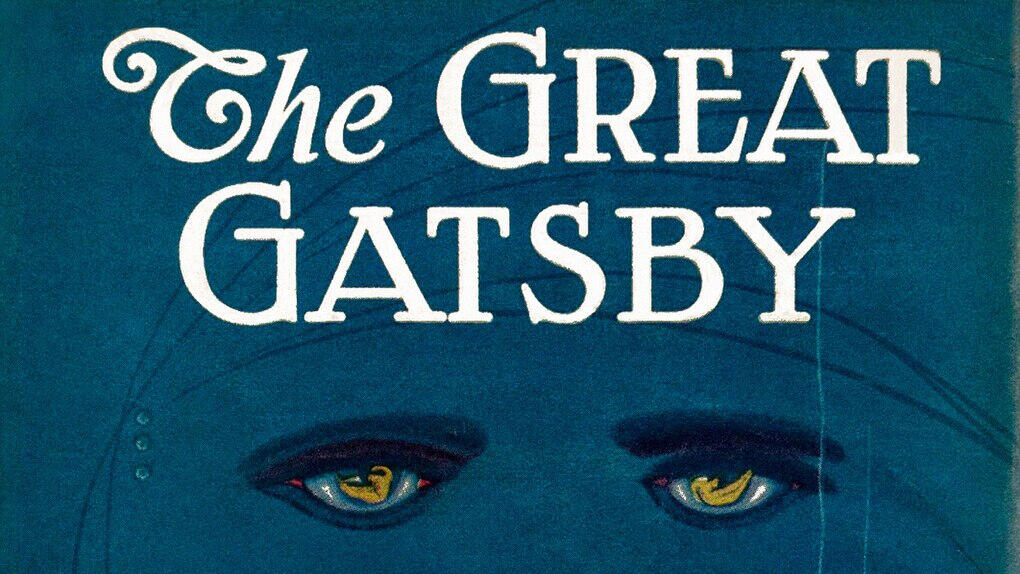Considered one of the quintessential American novels, The Great Gatsby is a masterfully written tale with many layers of themes, symbols, and messages. F. Scott Fitzgerald (1896-1940) published the book in 1925, when the subject matter was extremely contemporary. Both the characters in the book and the American people were experiencing the Roaring Twenties, making it an interesting read for the people of the time and future readers alike. Discover the historical context and messages Fitzgerald included in his enduring classic.

The Great Gatsby Summary and Analysis
Understanding any piece of literature is much easier when you have context. With background information about the author and the themes being written about in the book, you can better understand the impact and implications of what’s being said. Here, we’ll discuss some of the key contextual points that make the summary, themes, and messages make more sense.
Historical Context
F. Scott Fitzgerald had a penchant for writing since he was a child. He became a popular writer in his late 20s, after lots of struggle to gain traction. His works were often based on true experiences he had as a youth in the Jazz Age, with analytical perspectives and social critique mixed in.
In the 1920s, the US was experiencing a cultural revolution: post-WWI unprecedented economic prosperity combined with intoxicating jazz music, flapper culture, rebellious youths, and widespread libertine mentality all met to create a new type of society exemplified in The Great Gatsby.
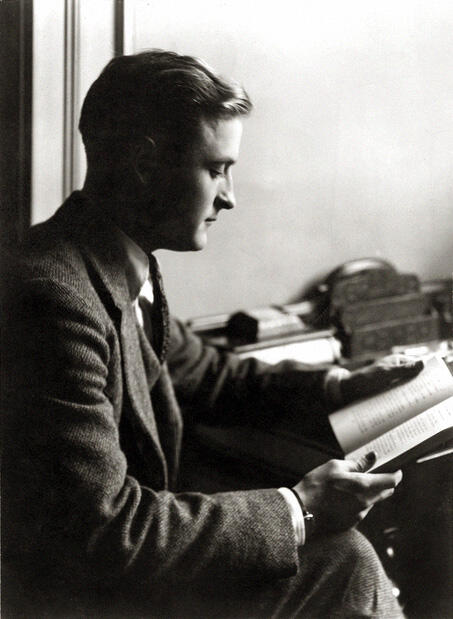
Crucially, prohibition served to heighten the attitudes of the rebellious crowd, leading to a lucrative bootlegging culture (think: Al Capone) and an even more brazen society.
Fitzgerald was both part of that world and disillusioned by it, noticing that under all the sparkle was a hollowness.
The Great Gatsby was not that popular upon its release. The readership at the time didn’t understand the message, so they were underwhelmed.
But, in the 1940s, the US government issued thousands of copies to troops in WWII, and the public’s interest in Fitzgerald’s work was reinvigorated. With the hindsight of the Great Depression, readers were able to better understand some of the themes and resonate with the messages more.
...of all the reviews, even the most enthusiastic, not one had the slightest idea what the book was about.
F. Scott Fitzgerald talking about critical reviews for "The Great Gatsby" upon its publication
Summary
The narrator, Nick Carraway, moves to Long Island, New York, in an area known as West Egg, in the summer of 1922. He rents an average home next to an enormous mansion, which is owned by a mysterious millionaire named Jay Gatsby. Not much is known about Gatsby except that he often throws lavish, outrageous parties full of alcohol.
Nick is Daisy Buchanan’s cousin. Daisy and her husband, Tom, live an upper-class lifestyle across the bay in the “old money” district of East Egg. From the outside, Daisy and Tom’s marriage looks perfect, but it’s actually full of lies, deceit, and dissatisfaction.
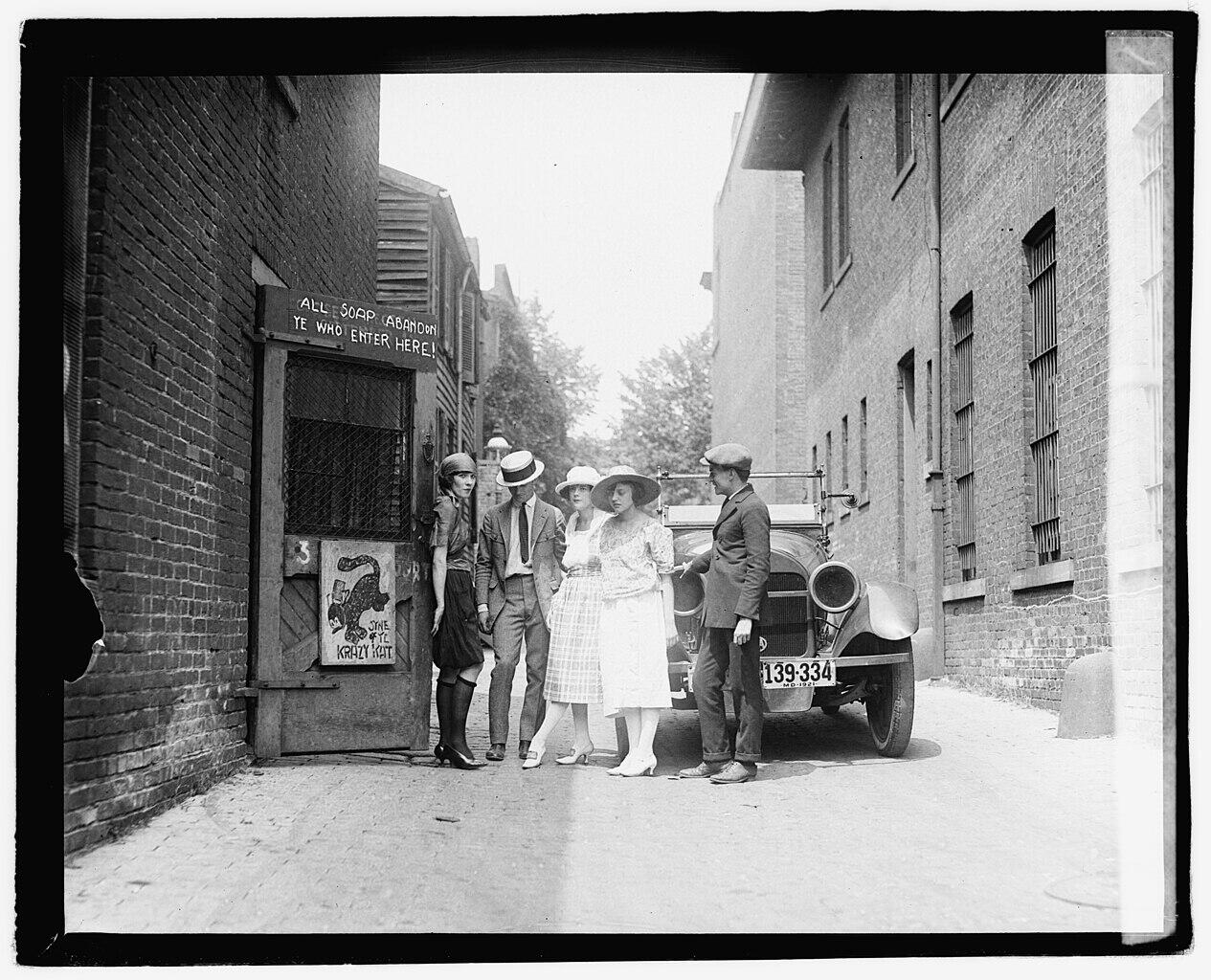
Tom is having a prolonged affair with Myrtle Wilson, the wife of a mechanic. Myrtle and her husband, George, run a garage in a desolate part of town known as “the valley of ashes,” which was a real landfill near New York City, created with all the waste that went into the lavish lifestyles of the nearby wealthy.
Eventually, Nick meets Gatsby and finds out he is actually very charming and hopeful, albeit a little ostentatious and strangely innocent. It’s revealed that Gatsby actually bought his mansion because it’s close to Daisy, whom he is in love with, but he had to leave to fight in WWI. She married Tom while he was away, but he never got over her. In fact, he throws parties hoping she will attend and he can at least spend time with her, if not win her back entirely with his wealth and reputation.
Each night he added to the pattern of his fancies until drowsiness closed down upon some vivid scene with an oblivious embrace. For awhile these reveries provided an outlet for his imagination; they were a satisfactory hint of the unreality of reality, a promise that the rock of the world was founded securely on a fairy's wing.
Nick Carroway's internal commentary about Jay Gatsby
Feeling sympathy for the situation and also having a little twisted curiosity, Nick agrees to invite Daisy to tea, where Gatsby will make an appearance, and the two can reunite. For a short time, the two rekindle their old romance. But the illusion of a happy ending fades quickly. Tom exposes Gatsby’s criminal enterprise, revealing his connections to bootlegging, which is where his fortune comes from.
Daisy, distressed at having been found out by Tom and learning about Gatsby’s criminal connections, tries to run away with Gatsby’s car while drunk. She accidentally hits and kills Myrtle Wilson. Gatsby intends to take the blame legally, but Tom convinces George Wilson that Gatsby was both Myrtle’s lover and her killer.
George, distraught, shoots and kills Gatsby before taking his own life.
The Buchanans pack up and move elsewhere, avoiding any responsibility. Nick is completely disillusioned by the moral decay in the city and returns to his Midwest roots.
Learn more about another tale of revenge: Hamlet.
Major Events Timeline
Before the novel begins
Important backstories
James Gatz sails with an eccentric, wealthy fisherman for 5 years, giving him time to invent his new persona, Jay Gatsby, who knows how to act polished and wealthy. He ends up being stationed in Louisville as an army officer, where he meets Daisy. They have a passionate 1-month relationship before he is sent to Europe. Daisy ends up marrying Tom while Gatsby is away.
June 1922
Nick moves to West Egg
Gatsby is already in his mansion, the Buchanans are already in their East Egg home, and Nick is the catalyst who gets the plot moving.
July 1922
Rising Action
Nick goes to his first Gatsby party, where he meets Owl Eyes, a perceptive character who sees that Gatsby is putting on a front, cluing Nick into the truth. Nick becomes a Gatsby sympathizer and hosts the pivotal tea party where Daisy and Gatsby reunite.
August 1922
New developments
Daisy and Gatsby begin their affair, and it's hinted that Tom has suspicions. Gatsby stops throwing parties since Daisy is already with him, and she doesn't like them. Daisy indicates that she intends to leave Tom, but when it's revealed that Gatsby's fortune comes from crime, she backs out. She ends up trying to run away from the situation, accidentally running over Myrtle. Gatsby is subsequently killed, and the Buchanans run away from the city without tarnishing their name.
November 1922
Nick returns to the Midwest
He gives up on trying to get wealthy in the stock market, fed up with the moral corruption of those in that world.
1924
Nick writes "The Great Gatsby"
The book is essentially Nick's furious tell-all journal entry about the whole situation.
The Great Gatsby Analysis Overview
The Great Gatsby blends the genres of tragedy, modernism, and social satire. At first glance, the story seems to be about a man chasing his dream of lost love. But beneath that, it’s a critique of society and fate.
Tragedy
Every major character in The Great Gatsby carries a sense of tragedy.
Gatsby has wealth but not the love he longs for. Daisy is trapped in a loveless marriage.
Jordan hides behind charm and dishonesty.
Myrtle seeks escape through an affair and meets a fatal end, while George, broken by betrayal, turns to violence.
Nick observes it all with a sense of emotional detachment, likely due to PTSD from war.
Even Tom, though cruel and irredeemable, is a product of the moral decay of his world.
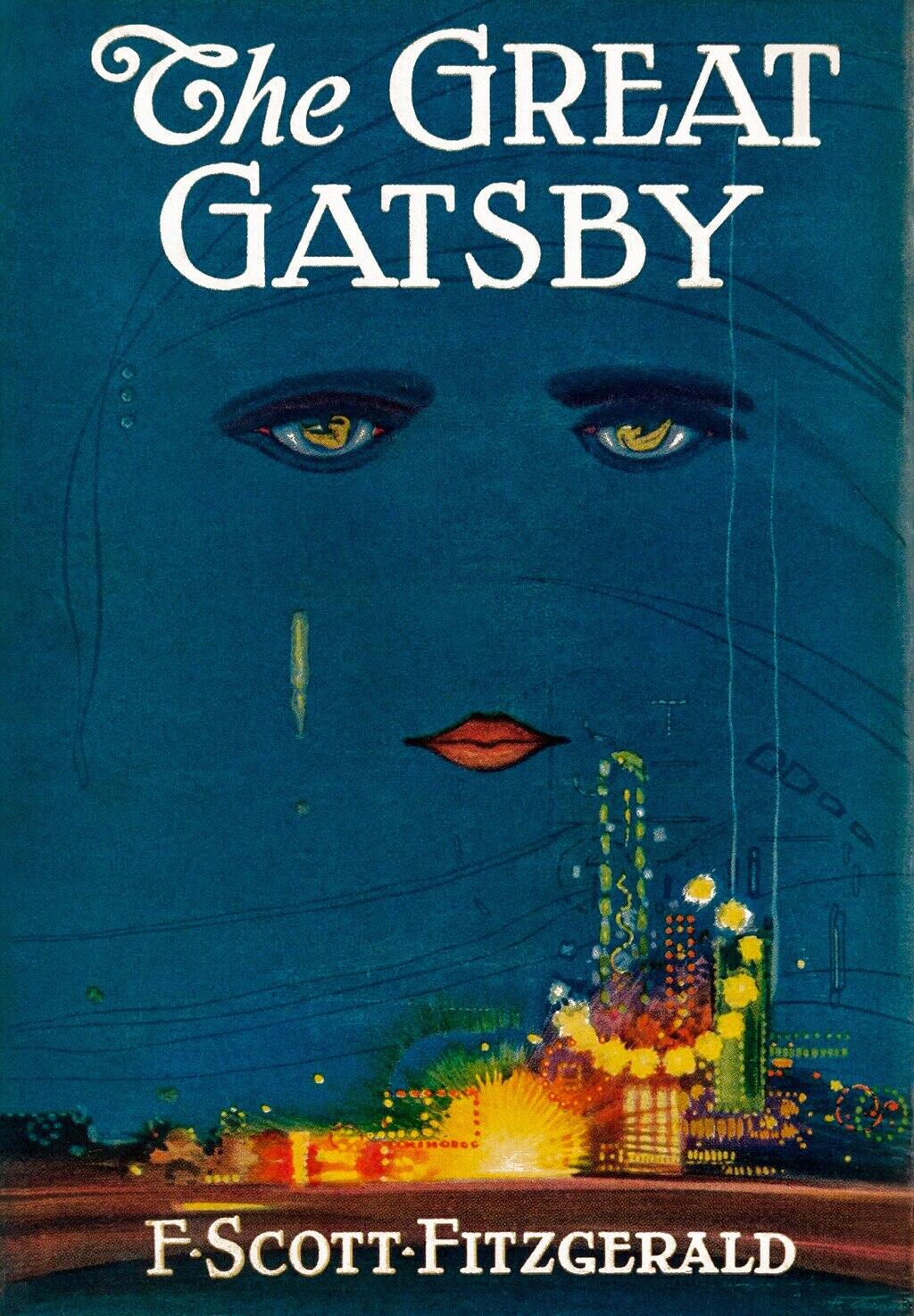
Each life reveals the cost of illusion and privilege, which can’t hide the emptiness and pain beneath the surface.
You see I usually find myself among strangers because I drift here and there trying to forget the sad things that happened to me.
Gatsby, to Nick
Modernism and Social Satire
Gatsby’s extravagant and debauched parties, the multiple affairs between different characters, crime and corruption, the valley of ashes, and the sense that all the characters are being untrue to themselves point to the biggest critique in the book: the collapse of a society losing its moral compass. Corruption and moral blindness are evident.
Because truth is stranger than fiction, the Roaring Twenties were absolutely crushed by the Great Depression, proving Fitzgerald’s point about how hollow all the progress had been from the previous decade.
The Lord of the Flies is another novel about the degradation of society.
The main social critique in The Great Gatsby is that unfettered consumerism and capitalism, combined with unprecedented wealth, created an environment full of hedonism, materialism, classism, and moral bankruptcy. What did he want readers to do with that message? He wanted readers to think critically about their decisions and morals and not be deluded by the American Dream.
In the novel, each character’s fate reflects their social position. Gatsby, born poor, is cast aside by the wealthy he idolizes and is killed as a shield. Myrtle and George die as casualties of class, while Tom and Daisy retreat into comfort, untouched by consequence. Nick alone escapes, rejecting the hollow values of the East Coast.
Fitzgerald’s message is clear: even among the privileged, emotional distance and class division are unavoidable, leaving everyone searching for meaning.
They were careless people, Tom and Daisy- they smashed up things and creatures and then retreated back into their money or their vast carelessness or whatever it was that kept them together, and let other people clean up the mess they had made.
Nick, internal commentary about the Buchanans
Character Analysis
Each character in The Great Gatsby serves specific and crucial purposes, representing certain aspects of society. The limited cast of characters makes it easy to keep track of complex themes, motifs, and messages. Keeping each character’s attributes in mind while reading the story will help you understand more subtleties in the novel.
Jay Gatsby
Born James Gatz, he represents the “self-made man.” He literally reinvented himself, changing his name and mysteriously pulling himself up by his bootstraps to go from poverty to mysterious wealthy elite. But under the wealth, there still lives an “innocent” idealist (innocent in that, being nouveau riche, he doesn’t understand that he will never fit in with the old money crowd). More than that, all the things he “self-made” were actually made for Daisy.
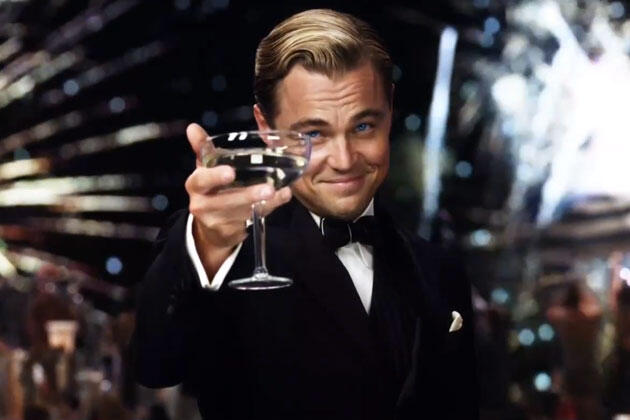
Gatsby can be described as ambitious, romantic, and restless.
His grand dream appears well-founded (after all, it had taken years of planning to pull off), but it was actually extremely fragile.
He was stuck believing that the past could be revived and relived in the present.
He is blindly optimistic about achieving his goal of getting Daisy back, failing to realize that it was impossible for them to be together.
He stands for the pursuit of the American Dream: it is grand in theory, but in reality, it is impossible. He is punished and killed not for being a criminal, but for being naive enough to try to protect Daisy (his American Dream), who immediately abandoned him.
Can’t repeat the past? … Why of course you can!
Gatsby
Nick Carraway
Nick acts more like an observer than an active participant in most of the novel. At least, it mostly feels that way since Nick tells the story after it already happened. He was likely suffering from the effects of PTSD (then called “shell shock”), and he is an unreliable narrator.
He represents the outsider’s perspective of the height of the Roaring Twenties lifestyle. He also represents the average midwesterner, describing himself as “honest” and yet showing multiple times that he is not, and is at times a little hypocritical.
Nick is largely based on Fitzgerald himself, who was also from Minnesota originally and served in WWI.
He serves to allow the author to put in some of his own opinions into the story directly.
His viewpoint helps us, the reader, make more sense of the morality of the people around him, but it’s an incomplete, biased view.
His detached tone hints at a deep apathy or depression, and helps explain his fascination with Gatsby’s idealism.
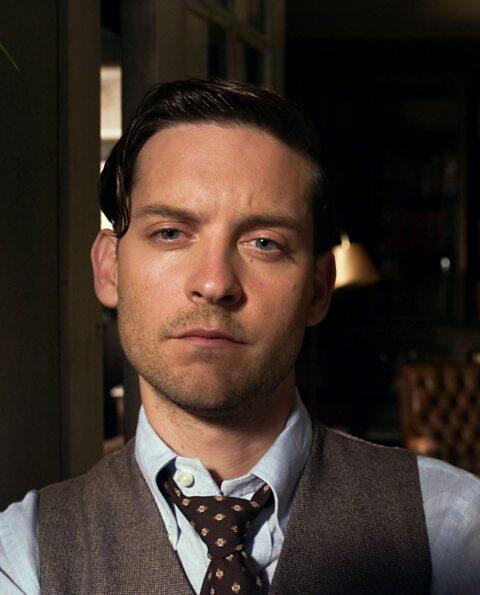
Nick is drawn to Gatsby’s shining personality as a way to feel something. Gatsby’s hope is intoxicating to Nick, but he also doesn’t even like Gatsby very much. Meanwhile, Nick is repulsed by the dishonesty of everyone else around him (failing to see the irony in his own actions).
In the end, he is completely disillusioned by what he saw in West Egg: the grotesque superficiality, carelessness, frivolousness, hedonism, and moral corruption and decay were all too much.
For a different commentary about society, check out 1984 by George Orwell.
High over the city our line of yellow windows must have contributed their share of human secrecy to the casual watcher in the darkening streets, and I was him too, looking up and wondering. I was within and without, simultaneously enchanted and repelled by the inexhaustible variety of life.
Nick
Daisy Buchanan
Daisy Buchanan is charming, beautiful, and elusive. Fitzgerald based her partly on Ginevra King, a love from his own youth who came from a wealthy family. Like Ginevra, Daisy chooses the security of a suitor from a wealthy family over passion.
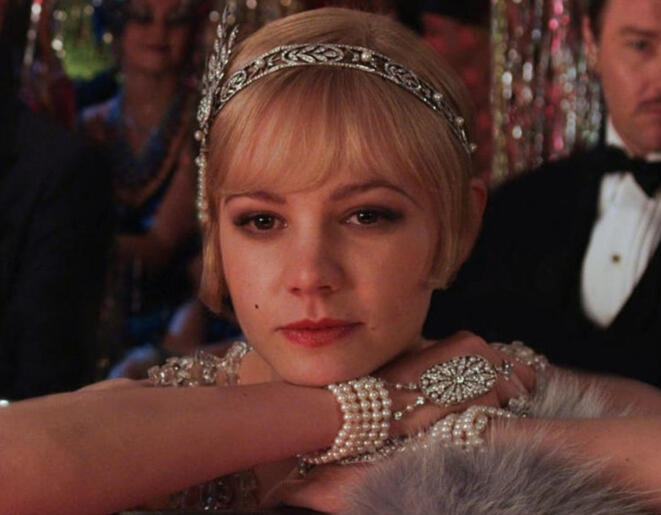
Daisy represents the American Dream’s false promise.
She appears to be capable and alluring, conducting herself with grace and speaking softly, giving the sense that she is full of feeling and depth.
Gatsby sees her as pure, glowing, and golden, representing all that he has ever wanted.
But under the façade, she is selfish and makes decisions out of fear. She is attractive but hollow.
When she is faced with a moral crisis (that she directly had a hand in), she retreats back into her life protected by wealth, instead of doing the right thing.
Daisy longs to be ignorant so she can live a carefree life, a concept you can learn more about in Fahrenheit 451.
I hope she'll be a fool ― that's the best thing a girl can be in this world, a beautiful little fool.
Daisy
Tom Buchanan
Tom Buchanan is the embodiment of old money and inherited privilege. He’s confident, racist, and arrogant. He has no redeemable qualities.
He is the anti-Gatsby: instead of chasing any dreams, he attacks anything and anyone who threatens to disrupt the social order, which puts him at the top.
Where Gatsby fought to earn his way to the top, Tom was simply born into it.
He didn’t do anything to earn his status; therefore, his intelligence and character don’t need to be sharpened.
He is so wealthy that he could do just about anything, yet he spends his time beating his wife, having an affair, and being belligerent and angry about his circumstances.
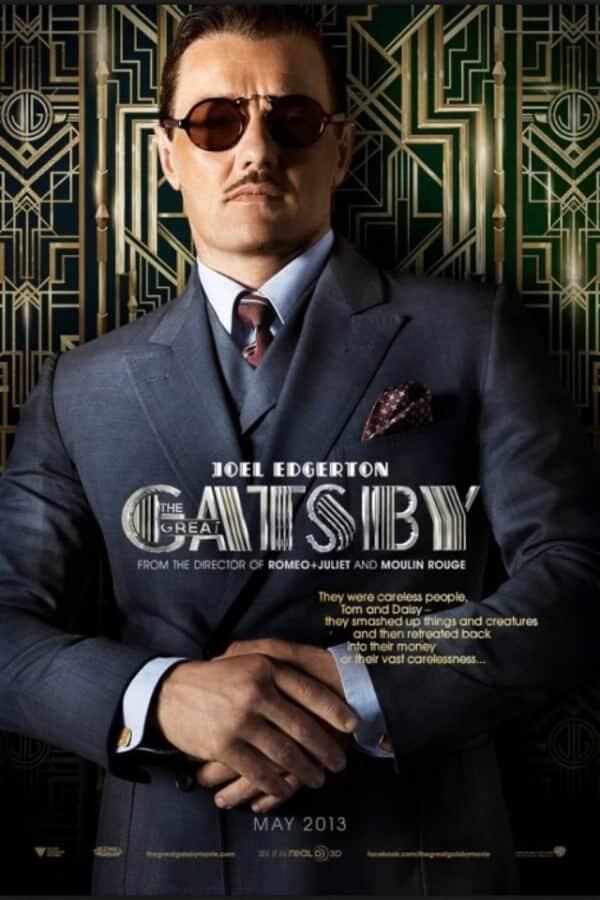
He is supremely hypocritical, cheating on his own wife with another married woman and then condemning Gatsby for doing the same thing. The difference for him was that Daisy was his property.
Through Tom, Fitzgerald criticizes the American class system, which pretends to value merit but actually rewards inheritance.
Two shining arrogant eyes had established dominance over his face and gave him the appearance of always leaning aggressively forward. ... you could see a great pack of muscle shifting when his shoulder moved under his thin coat. It was a body capable of enormous leverage—a cruel body.
Nick, internal commentary about Tom
Jordan Baker
A minor yet pivotal character, Jordan is a professional golfer and Daisy’s friend. She represents the flapper culture of the time. She is cool, confident, and measurably detached. She keeps everyone at arm’s distance through dishonesty. Jordan was also rumored to have won a defining tournament through cheating, meaning her whole successful career and social currency are built on a lie.
She and Nick have a brief romance, but ultimately it is shallow and empty from both sides, reiterating the theme of moral vapidness that defines the novel. Fitzgerald uses Jordan to comment on women’s freedom (contrasted with Daisy’s capture within a traditional role) in the Jazz Age. She is independent and modern, but we also know about Fitzgerald’s opinions on modernism. Her cynicism, self-absorption, and casual morals paint a depressing picture for women’s social evolution.
And I like large parties. They’re so intimate. At small parties there isn’t any privacy.
Jordan
Myrtle and George Wilson
Myrtle and George live in the valley of ashes, a place that represents moral and economic decay. Myrtle tries to escape from her low-class struggles by using Tom, believing that he will give her access to his wealth (he doesn't, really). Her tragic death symbolizes the destruction caused by greed and delusion. What’s more, her demise was caused by Daisy (the elite class), but blamed on Gatsby (wealthy, but came from the working class, too), symbolizing the in-fighting among the working class in America.
George is the epitome of a person resigned to their station. He is quiet, spiritual, and defeated. It’s at his garage we find the iconic sign bearing the eyes of Doctor T. J. Eckleburg. In the end, his act of desperate violence is symbolic of a man crushed by the world’s indifference. He is Gatsby in another life, where he didn’t strive for anything above his station.
Themes and Symbols
There are many themes and symbols in The Great Gatsby. There are also many ways to interpret them. One of the reasons the novel is so enduringly popular is that, when you really think about the messages, you can come up with a lot of interesting philosophical questions about humanity, morality, and society. Here are some of the ways to interpret the main themes in the novel.
Animal Farm also tackles issues about power, corruption, and class inequality.
The American Dream
On the surface, The Great Gatsby celebrates the idea that anyone can rise through hard work and ambition. Gatsby is the epitome of the perfect American success story.
But, on a deeper level, Fitzgerald is demonstrating that the Dream has been corrupted. Gatsby’s wealth comes from crime, not honest work. His goal is not success for its own sake, but acceptance by a social class that will never truly embrace him.
Even more than that, Gatsby was actually living the conventional version of the American Dream: coming from nothing, rising up through sheer determination, and having enough money and power to do whatever you want. But his personal dream, getting to go back to the way things were with Daisy when they were young, will never, ever happen.
The green light at the end of Daisy’s dock embodies this dream. It shines across the bay, always visible but always distant. Gatsby reaches for it night after night, believing it will bring happiness. It becomes a symbol of hope. But its everlasting distance demonstrates the impossibility of ever achieving happiness.
The emptiness of Gatsby's American Dream is starkly demonstrated when Daisy betrays and leaves him, and ultimately contributes to his wrongful death. Then, only three people attended his funeral.
Social Class and Mobility
The novel draws a clear line between “old money” (Tom and Daisy) and “new money” (Gatsby, and to a lesser extent, Nick).
West Egg and East Egg are two peninsulas based on the real peninsulas on Long Island known as Great Neck and Manhasset. In the novel, they represent two Americas:
West Egg
- New money
- Literally about the western areas of the US
- Those who are chasing money
- Nouveau riche who don’t know how to be classy or savvy with their wealth
East Egg
- Old money
- Literally about the eastern US, which had a lot more established wealth, since it was settled first
- Those who are born into privilege
- Wealthy who are so wealthy, that “new money” folks don’t even realize they aren’t on the same level
Fitzgerald suggests that true social mobility is an illusion. No matter how rich Gatsby becomes, he will never be accepted by those born into wealth. That’s one reason why he and Daisy never would have worked out, even if Tom was never in the picture. His parties attract people who enjoy his generosity but abandon him when tragedy strikes, showing the shallowness of the wealthy class.
When Myrtle tries to elevate her own status the only way she can see how, she is killed for attempting to disrupt the social order, as is Gatsby. Meanwhile, the Buchanans get away with everything with no repercussions because of their established wealth.
To Kill a Mockingbird is another classic about the inequalities in American society.
The Green Light
The green light is the most iconic symbol in The Great Gatsby, perhaps even in all of American literature. It’s such a simple metaphor that yields different interpretations depending on who you ask.
It’s obvious that, for Gatsby, it’s the symbol of his dream; it’s literally a beacon leading directly to Daisy.
But, for the reader, it’s the symbol of human desire (and in the context of the book, it represents the American Dream in general).
All of us endlessly reach toward something.
Fitzgerald’s pessimistic view is that none of us end up any closer to it.
In the final passage, Nick reflects that Gatsby’s dream is the same as humanity’s: to keep reaching, even when the current pushes us back.

Gatsby believed in the green light, the orgastic future that year by year recedes before us. It eluded us then, but that's no matter—tomorrow we will run faster, stretch out our arms farther.... And one fine morning— So we beat on, boats against the current, borne back ceaselessly into the past.
Nick, about Gatsby
Does this revelation inspire hope in the reader to persist onward towards a dream? Does it shatter the reader’s illusions and make them give up on ever reaching their goals? It depends on who you ask and their personal interpretation.
The Great Gatsby Quiz
Prep for class by making sure you can answer these common questions about The Great Gatsby!
Here are some of the most common questions and concepts you'll need to know when studying literature in English class. Make sure to read your book thoroughly to understand the messages completely!

